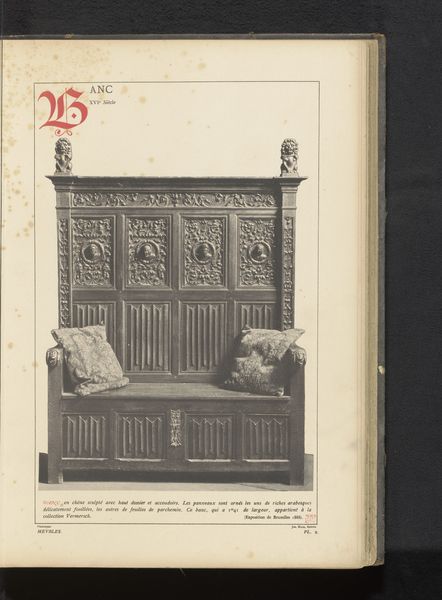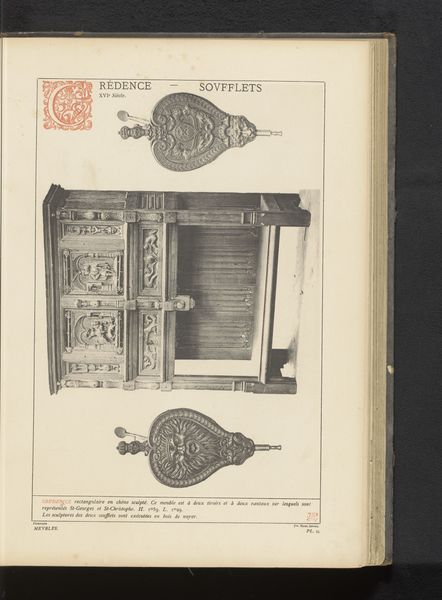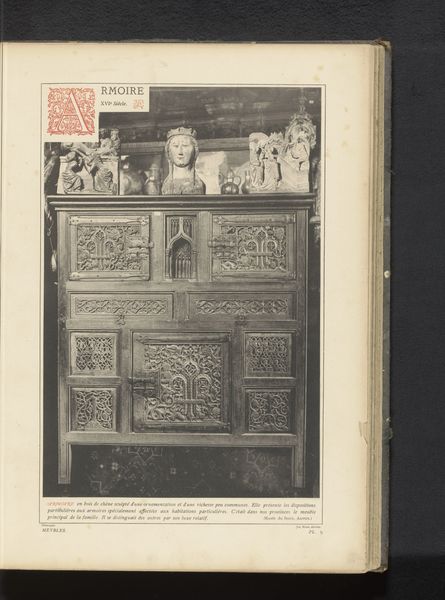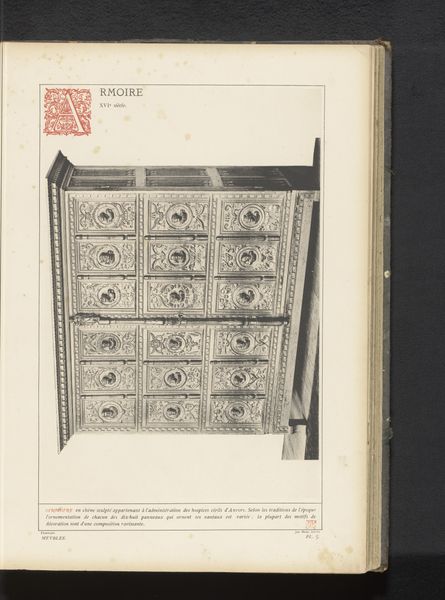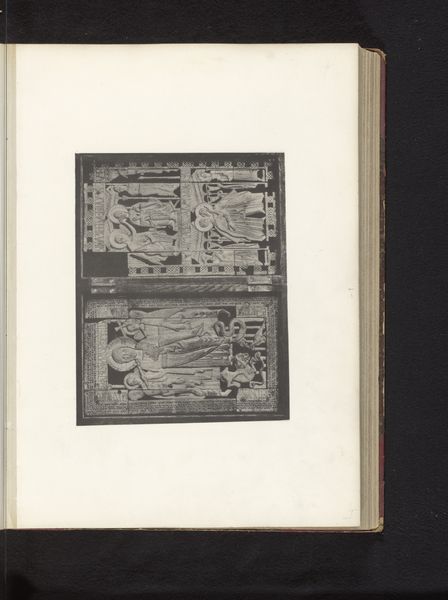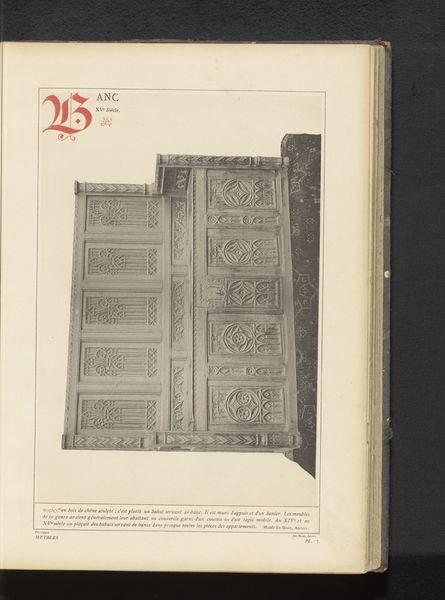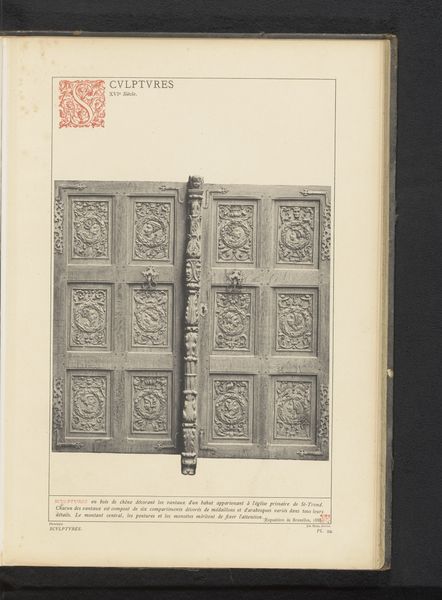
print, photography, wood
# print
#
photography
#
wood
#
decorative-art
Dimensions: height 341 mm, width 235 mm
Copyright: Rijks Museum: Open Domain
This oak bench, made in the 16th century, showcases the intricate designs typical of its time. Notice the repeated quatrefoil patterns along the sides. This ancient symbol, representing a four-leafed flower, frequently embodies notions of good luck. The quatrefoil motif, an emblem of symmetry and balance, has roots stretching back to ancient civilizations, appearing in Gothic architecture and medieval heraldry. The recurrence of the motif across eras suggests a persistent human desire for harmony and order, a silent dialogue across centuries. But consider how its symbolic meaning shifts. In Christian iconography, it may signify the four evangelists, while in secular contexts, it serves as mere ornamentation. These transformations reflect the fluid nature of symbols, constantly adapting to new cultural landscapes. Ultimately, the quatrefoil on this bench is a testament to the enduring power of symbols, their ability to evoke emotions and resonate with collective memory. It embodies the cyclical nature of visual language, reminding us that history is not linear but a web of interconnected images and ideas.
Comments
No comments
Be the first to comment and join the conversation on the ultimate creative platform.
